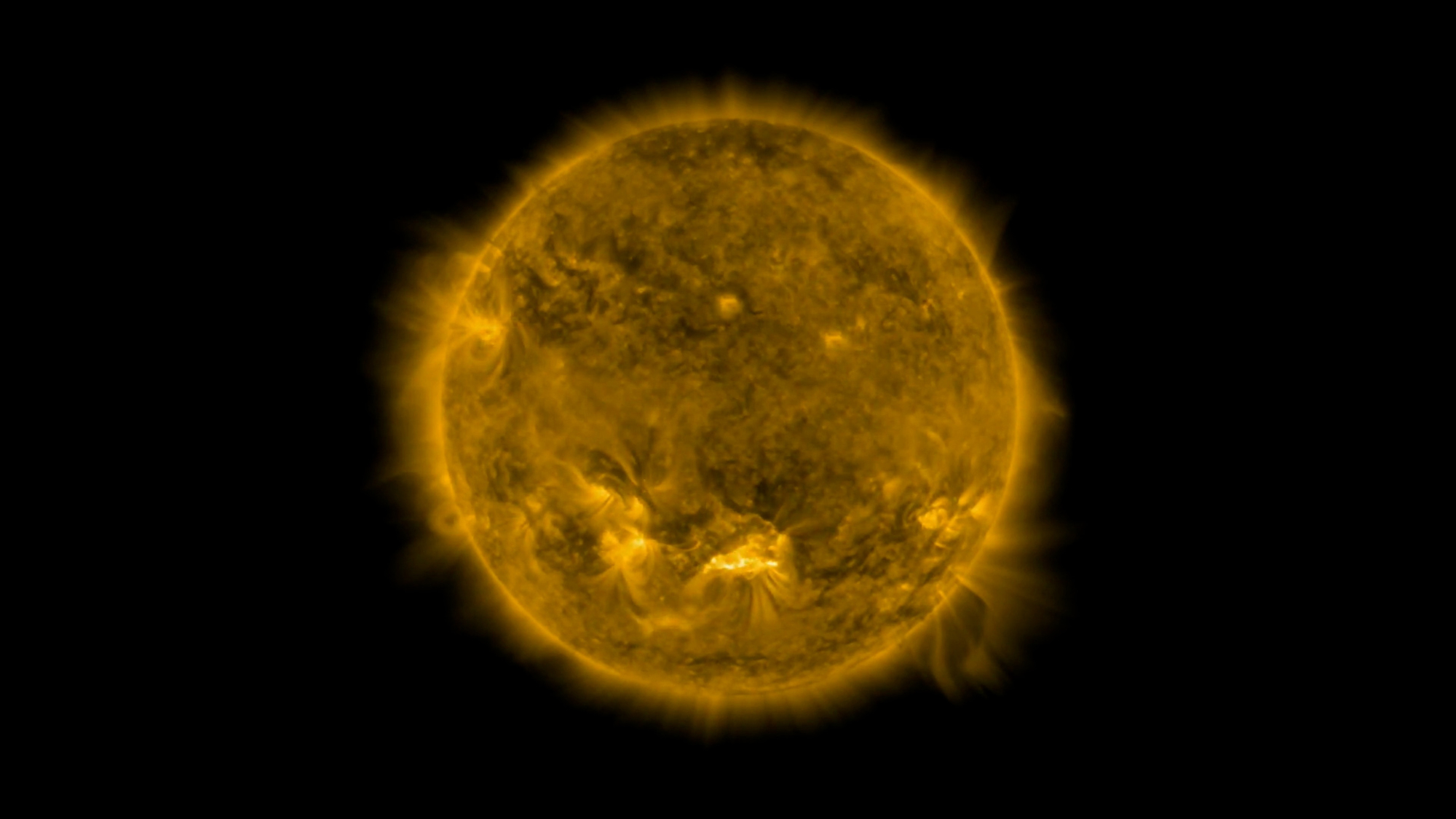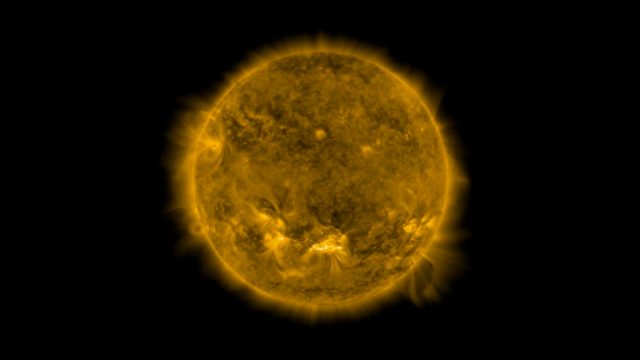
By Peter Barker
The sun unleashed a powerful solar flare on Oct. 28 that produced an aurora visible in parts of the United States, and a video of the event was shared this week by the National Oceanic and Atmospheric Administration.
Solar flares are explosive outbursts on the sun that generate intense radiation in the form of X-rays and energetic particles that can sometimes affect Earth. As this radiation often travels at or near the speed of light, it can reach the Earth within about eight minutes.
When electrically charged particles from the sun interact with Earth’s atmosphere, it produces shimmering, colorful light displays called auroras near the planet’s magnetic poles. Near the North Pole these are called aurora borealis, or the northern lights. The auroras produced by the latest flare were visible as far south as Pennsylvania and Iowa in the United States.
“The flare produced aurora (northern lights) that were visible across Canada and as far south as Pennsylvania, Iowa and Oregon,” the National Environmental Satellite, Data, and Information Service, created to operate and manage the U.S. environmental satellite programs, said in a statement.
Solar flares are linked to eruptions called coronal mass ejections (CMEs), which send huge clouds of magnetized plasma into space, plowing through the continuous flow of charged particles that normally stream from the sun. This is known as solar wind and can reach the Earth in up to three days.
The Earth has a magnetic field that deflects most of the harmful radiation. The sun, which is made of electrified gases called plasma, also generates its own magnetic fields, and all solar activity is driven by them.

“We can see manifestations of the sun’s magnetic field in the form of active regions, which appear at the sun’s surface as cooler, dark areas and in SUVI [Solar Ultraviolet Imager] observations of the sun’s corona as bright concentrations of loops,” the National Environmental Satellite, Data, and Information Service said.
It said that active regions mark areas where magnetism is the strongest and that solar flares are powered by the energy stored in the magnetic fields of these active regions.
“Sunspots are used as an indicator of solar activity, and the number and location of sunspots [are] used to track the sun’s overall activity,” the agency said. “Although the sun may look like a constant ball of light every day, it actually goes through a cycle of increasing and decreasing activity that lasts around 11 years.”

Researchers determined that the “sun’s activity is beginning to ramp up and should peak around 2025, increasing the chance for stronger solar storms in the coming years. Afterward, geomagnetic activity will begin to decrease again and a new cycle will begin.”
Increased radiation and geomagnetic storms can potentially affect power grids, radio signals and communications systems on Earth. They can also affect satellite operations and GPS navigation capabilities.
National Environmental Satellite, Data, and Information Service satellites monitor the sun and when solar flares or coronal mass ejections occur. Since these events can happen unpredictably and some can reach Earth within minutes, the agency’s Space Weather Prediction Center uses this information to monitor the activity on the sun and make forecasts and predictions and issue alerts.
“As the solar cycle moves toward the solar maximum, [our] satellites will continue to monitor the sun’s activity,” the agency’s statement said.
Edited by Richard Pretorius and Kristen Butler
The post VIDEO: Sun-Canny: Powerful Solar Flare Produced Aurora As Far South As Iowa appeared first on Zenger News.




